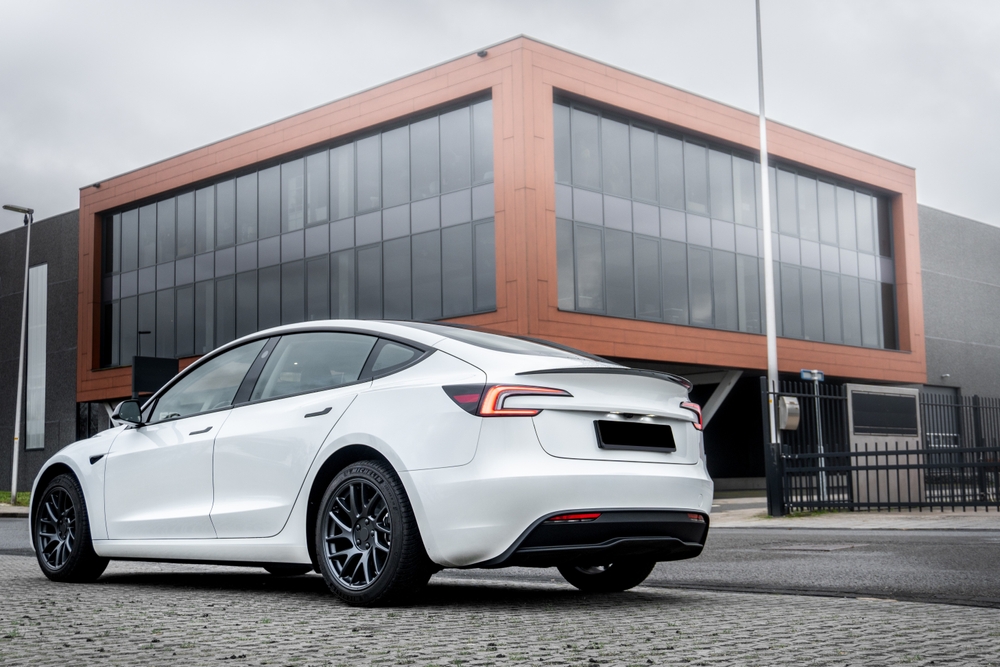Man Breaks Down Costs Of Owning Tesla Model 3 Over 4 Years And 60,000 Miles Before Comparing It To What He Would Have Spent On Gas Over Same Period

Picture this: driving 60,000 miles over four years without ever stopping at a gas station. While millions of car owners grit their teeth at fluctuating gas prices, one Tesla Model 3 driver quietly tracked his journey, meticulously recording every expense—charging costs, maintenance, insurance—to answer a burning question: Does owning an electric vehicle truly save money, or is it just an eco-conscious statement?
As electric vehicles continue to reshape the automotive world, the Tesla Model 3 has become a household name, touted as the bridge between cutting-edge technology and practical sustainability. But beyond the sleek design and promises of a lower carbon footprint, how does it hold up financially? For those considering the switch, it’s not just about environmental benefits; it’s about whether the numbers add up.
Tesla Model 3—A Quick Overview
Model 3 can drive over a mile on the energy it takes to boil a pot of water for pasta 🍝 pic.twitter.com/F2A8AwPVZt
— Tesla (@Tesla) March 17, 2023
The Tesla Model 3 is one of the most talked-about electric vehicles, known for its focus on efficiency, sustainability, and performance. Available in multiple configurations—Standard Range Plus, Long Range, and Performance—it offers a range of options for drivers with different needs and budgets.
One of the standout features of the Model 3 is its electric drivetrain, which provides instant acceleration and a smoother driving experience compared to gas-powered vehicles. With a range between 272 and 358 miles per charge, it addresses the common concern of range limitations associated with electric cars. Tesla’s extensive Supercharger network further ensures that long-distance travel is straightforward and reliable.
The vehicle is designed for functionality and simplicity. Inside, the minimalist cabin features a central touchscreen that controls most functions, replacing traditional dials and buttons. Tesla’s software updates add new features over time, ensuring the car stays current with the latest advancements. Autopilot, Tesla’s driver-assist system, also adds value, offering convenience and safety features like adaptive cruise control and lane-centering.
While the upfront cost of the Model 3 is higher than many traditional vehicles, it compensates with significantly lower maintenance and fueling expenses. With fewer moving parts, electric vehicles require less servicing, and the cost of charging is considerably lower than gas over time. These factors, combined with potential government incentives, make the Model 3 a practical choice for many drivers.
The Costs of Owning a Tesla Model 3 Over 4 Years
Deals on Teslas are unbeatable right now.
I leased a Model 3 for my daughter for $1600 down, $250/mo.
$7500 Tesla incentive
$5300 CO credit
$1500 referral creditAmazing car, 370 mi range.
(If you’re in the market my referral link is in comments below—limited to 10.) pic.twitter.com/PhiPZTnyFc
— Kevin Dahlstrom (@Camp4) December 27, 2024
A Tesla Model 3 owner recently shared an in-depth breakdown of the costs associated with driving the vehicle over four years and 60,000 miles, providing valuable insight into the financial reality of owning an electric car. The journey began with the purchase price of the Model 3, which the owner noted ranged between $40,000 and $55,000 depending on the chosen configuration. By taking advantage of government incentives and tax rebates—common for EVs—the owner managed to offset a portion of the initial expense, highlighting how such programs play a critical role in making electric vehicles more accessible.
Charging costs were another significant component of the analysis. The owner primarily charged the vehicle at home, reporting an average cost of $0.13 per kWh. Over the course of 60,000 miles, the total spent on electricity came to approximately $1,500. When compared to traditional gas-powered cars, the savings were striking—covering the same distance in a comparable gasoline vehicle would have required about 2,400 gallons of fuel. At an average price of $4 per gallon, the gas bill alone would have exceeded $9,500. Even with occasional use of Tesla’s Supercharger network, which is slightly more expensive than home charging, the cost of keeping the Model 3 on the road remained far below that of a gas-powered alternative.
Maintenance expenses were surprisingly low for the Model 3. According to the owner, the car required only minimal servicing over the four years—mainly tire rotations, air filter replacements, and brake fluid checks—costing less than $500 in total. In comparison, a gas-powered vehicle of similar age and mileage would typically require oil changes, belt replacements, and potentially more significant engine repairs, all of which can quickly add up. The only area where the Model 3’s costs were slightly higher was insurance, as the advanced technology and repair costs of EVs often result in higher premiums. However, even with this added expense, the overall savings made Tesla ownership financially advantageous.
Non-Financial Benefits of Owning a Tesla Model 3
While the financial savings of owning a Tesla Model 3 are significant, the owner also highlighted several non-monetary advantages that make the vehicle stand out. One of the most notable benefits is its environmental impact. By switching from a gas-powered car to an electric vehicle, the owner significantly reduced their carbon footprint, contributing to cleaner air and lower greenhouse gas emissions. For many Tesla drivers, this sense of contributing to a more sustainable future is a driving factor in their decision to go electric.
The Tesla Model 3 also enhances the driving experience with features that traditional cars can’t match. The vehicle’s Autopilot system, which includes adaptive cruise control and lane-centering capabilities, reduces the stress of long commutes and road trips. Over-the-air software updates ensure that the car stays up-to-date with the latest features and improvements without requiring a visit to the dealership. The smooth acceleration, quiet cabin, and lack of engine noise also make for a more comfortable and refined driving experience.
Another key benefit is the convenience of charging. The owner found that charging at home eliminated the need for frequent trips to the gas station, saving both time and effort. Tesla’s Supercharger network, which is strategically located along major routes, made long-distance travel seamless, offering a quick and reliable way to recharge on the go. Combined with the innovative features of the car, these conveniences create a sense of ease and modernity that many drivers find difficult to replicate with traditional vehicles.
Hidden Costs and Challenges of Tesla Ownership
While the Tesla Model 3 offers impressive financial savings and unique benefits, the owner’s experience also shed light on certain hidden costs and challenges associated with EV ownership. One notable factor is the upfront cost. Despite government incentives and rebates, the initial price of a Tesla Model 3 remains higher than many comparable gas-powered vehicles. This higher price point can be a barrier for some buyers, even though long-term savings often offset the initial expense.
Another challenge the owner faced was related to charging infrastructure. While charging at home is convenient for most daily driving, long-distance trips required careful planning to ensure access to Tesla’s Supercharger network. Though Tesla has made significant strides in expanding this network, availability can still be limited in rural or less-developed areas, potentially causing inconvenience during extended travel. Charging times, even with a Supercharger, are also longer than refueling a gas vehicle, requiring adjustments to travel schedules.
Battery degradation and replacement costs are also concerns for EV owners. Although Tesla’s batteries are designed for longevity, the owner noted slight reductions in battery performance after 60,000 miles. While this didn’t significantly impact range, it’s a factor that EV buyers should consider as vehicles age. Additionally, the cost of replacing a battery, if needed, can be substantial. These challenges highlight the importance of weighing the trade-offs when considering an electric vehicle and planning for potential hidden expenses.
Is the Tesla Model 3 Worth It?
The Tesla Model 3 owner’s meticulous breakdown of costs over 60,000 miles reveals a compelling story of financial savings, convenience, and modern innovation. With total expenses for charging, maintenance, and insurance significantly lower than the cost of fueling and maintaining a gas-powered car, the financial argument for owning an EV becomes clear. However, the benefits of the Model 3 extend beyond cost savings, offering an environmentally conscious alternative and a driving experience enhanced by advanced technology.
Despite its advantages, Tesla ownership does come with challenges. The higher upfront cost, limited charging infrastructure in certain areas, and potential concerns about battery degradation are important factors for prospective buyers to consider. These trade-offs require careful thought, particularly for those transitioning from a traditional vehicle.
Ultimately, the decision to own a Tesla Model 3 hinges on individual priorities. For drivers seeking lower long-term expenses, reduced environmental impact, and a taste of cutting-edge technology, the Model 3 delivers. It’s not just a car—it’s an investment in a new way of driving. Whether it’s the savings at the pump, the lack of engine noise, or the knowledge of contributing to a more sustainable future, the Tesla Model 3 offers a glimpse of what the road ahead might look like.
Featured Image Source: Shutterstock
Loading...






